Mt. Qingcheng, Dujianyan, & Hot Pot
Hey. Just got back from today's trip to two of Chengdu's more famous tourist attractions. Sarah and I got up around 7:30 AM today and headed on to breakfast across the street from us. Each morning, breakfast is included in our stay here at the international dormatories. They serve bao zi, or buns stuffed with various things like pork or vegetables, a few xiao xai or small plates or pickled vegetables, and a few other things. The SU students (students who are currently 2nd years who will head on over to UW next year) came and picked us up in the lobby and we headed out to Dujiangyan. It has been rather interesting because out of the UW students here...I am the only one who can speak Chinese. So...SU students like to pair up with them to talk to them in English. And so, usually the professors come and talk to me. I guess that's pretty fair. I get to practice my Chinese with them. So, here is a picture of us on the bus heading on over to our first stop.
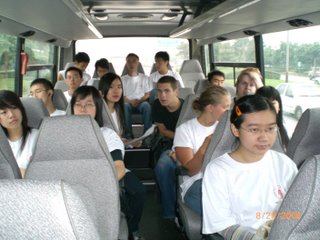 There are a total of 15 SU students who are planning on going to the states and 7 of us (although only 6 of us are actually here. the 7th student is currently in korea and is joining us in about 10 days.) This picture lacks some of the students sitting in front of me...so...:) yeah. just wanted to make sure. So, a little history about the places we went to, DuJiangyan is an ancient water conservancy project dating back to the Qing dynasty (256 B.C.) It was designed and built by the governor of Shu county called Libing. It's main purpose was and still is to prevent flooding in the surrounding area as well as a method of irrigation. Because of its existence, the plains of Chengdu have been called "The Land of Abundance." Besides its hydrolic functions, Dujiangyan is also regarded as a symbol of Chinese culture. It has been incorporated into Shu culture and has also had a large impact on Chinese culture. So, the following are some pictures of the trail to the area the Chinese term: fish mouth. It diverts the water from the inflowing sediments.
There are a total of 15 SU students who are planning on going to the states and 7 of us (although only 6 of us are actually here. the 7th student is currently in korea and is joining us in about 10 days.) This picture lacks some of the students sitting in front of me...so...:) yeah. just wanted to make sure. So, a little history about the places we went to, DuJiangyan is an ancient water conservancy project dating back to the Qing dynasty (256 B.C.) It was designed and built by the governor of Shu county called Libing. It's main purpose was and still is to prevent flooding in the surrounding area as well as a method of irrigation. Because of its existence, the plains of Chengdu have been called "The Land of Abundance." Besides its hydrolic functions, Dujiangyan is also regarded as a symbol of Chinese culture. It has been incorporated into Shu culture and has also had a large impact on Chinese culture. So, the following are some pictures of the trail to the area the Chinese term: fish mouth. It diverts the water from the inflowing sediments. 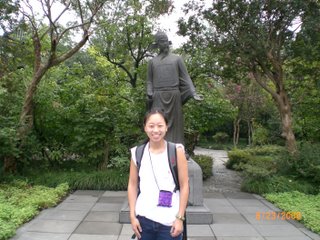
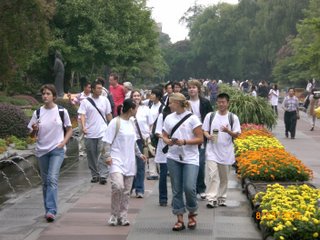
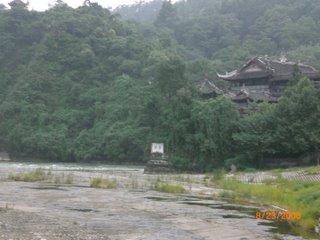
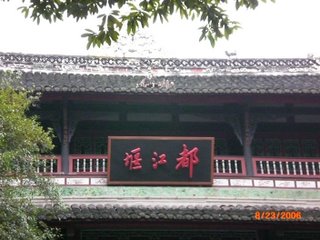


0 Comments:
Post a Comment
<< Home